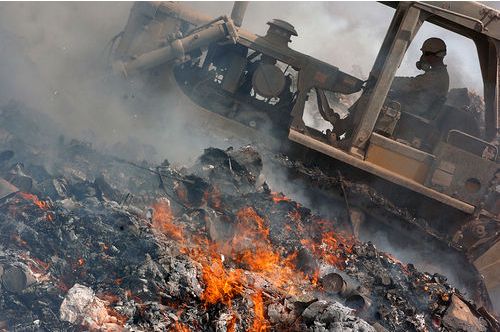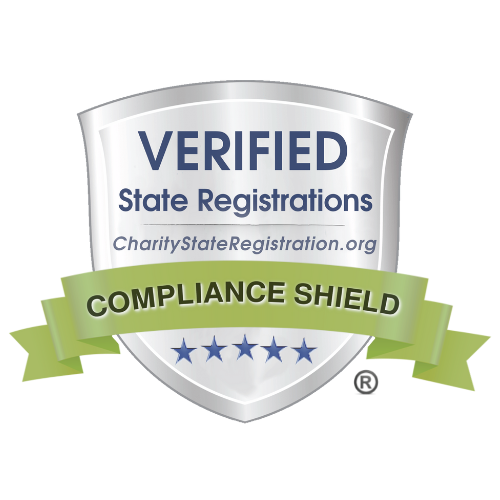IAVA Submits Testimony to the House Veterans’ Affairs Committee on Toxic Exposures Benefits

Tom Porter submits testimony to the House Committee on Veterans’ Affairs today on the topic of the VA’s implementation of the Honoring Our PACT Act
FOR IMMEDIATE RELEASE:
December 7, 2022
CONTACT: press@iava.org
Statement of Thomas Porter
Executive Vice President, Government Affairs
of
Iraq and Afghanistan Veterans Of America
before the
House Veterans Affairs Committee
December 7, 2022
Chairman Takano, Ranking Member Bost, and members of the Committee, on behalf of Iraq and Afghanistan Veterans of America’s (IAVA) more than 425,000 members, thank you for the opportunity to share our views on implementing the Honoring Our PACT Act for this hearing, “Fulfilling Our Pact: Ensuring Effective Implementation of Toxic Exposure Legislation.”
The final passage of the PACT Act was the culmination of years of hard work by IAVA and our many national veteran, military, and family support organization allies. We were empowered by the millions of our community who sacrificed during the Post-9/11, Gulf, and Vietnam wars and who would not take “no” for an answer. They sacrificed and demanded that their country keep up its end of the bargain and care for the injuries they or their families received in places that America sent them, without the vast majority of Americans having to go themselves.
Although we celebrated the passage of the PACT Act, we know that the President’s signature did not signal that the work is done. Much of the years of hard work that comes next will be unseen by most and carried out within the halls of federal agencies during rulemaking processes, meetings with stakeholders, and, yes – Congressional oversight hearings.
IAVA will focus on the education and outreach needed to inform veterans, service members, and their families of the new benefits. We have done outreach through traditional and social media, and public events, and will continue to look for new opportunities and partnerships. Just after the holidays, IAVA will host a discussion at the Student Veterans of America National Convention to spread the news on PACT Act to event attendees. We appreciate that senior VA staff will join us for that event to communicate what VBA and VHA have to offer the newer generation of veterans.
We have been encouraged by the advocacy of VA Secretary McDonough for the passage of the legislation, as well as the rollout during the initial weeks and months following the passage of the legislation. IAVA has been involved during initial outreach events, and we have found VA leaders to be energetic, enthusiastic, and aware of the weight of the opportunity to get the implementation of such landmark legislation right. We need this to continue, not just among senior leaders at VA, but throughout the VA system, where officials at all levels have a responsibility to inform the new beneficiaries of the new legislation.
The Department of Defense (DoD) also has a substantial responsibility with many who have been exposed over the course of the Global War on Terror (GWOT), are still on active duty today, and will one day transition from service. More than 200,000 service members leave the military each year, and they and their families need to know the benefits they have earned and how to get enrolled in the VA to obtain them. Many service members in the Reserve and Guard component are eligible now for VA care and need immediate outreach.
To underscore the challenge we are facing, I routinely talk to active duty and reserve component service members and veterans and rarely do I meet someone beyond those of us who campaigned to pass the PACT Act who really understand what the new law’s benefits are and what it means for them. IAVA’s survey data tells a similar story. In a November 2022 survey of veteran and military families regarding PACT Act familiarity, we found that less than half are familiar with benefits, only 14% fully understand the benefits, and nearly one-third are unsure if they are eligible. IAVA and the VSO/MSO community have a great deal of responsibility to educate our members and the public, but DoD and VA need to fully recognize this challenge and make every effort to ensure every eligible person who has served knows their benefits.
Senior leader engagement within both Departments is critical, not only to use their leadership stature that often commands greater attention and respect but also to set the example for leaders throughout their respective organizations. Secretary McDonough has set a good example with his monthly press conferences, which IAVA and others had called for years. In September, DoD Secretary Austin hosted Secretary McDonough for a virtual meeting with IAVA and other national VSOs and MSOs, which included a discussion of PACT Act benefits. That was a good start, and both Departments should do more of that, while also engaging veterans and military families directly through town halls, media, and online forums. Other senior civilian and uniformed leaders should be engaged as well, including the service secretaries.
Senior leader engagements must continue down to the local level, taking every opportunity to engage those eligible for the new benefits and those who will be eligible soon. The VA should continue and expand its efforts through Toxic Exposure Screenings and other local engagements and encourage veterans to complete them at every opportunity, from routine health care appointments to local-level personal contact by Vet Centers and through county Veterans Service Officers.
The VA must also reach out to American Indian Tribes, Native Hawaiians, and Alaskan Natives through the Indian Health Service, Bureau of Indian Affairs, Tribal veterans service organizations, and other suitable organizations and agencies. Additionally, a concerted effort must be made to reach veterans throughout rural America, as they are often more disconnected than others.
The DoD has the ability to conduct specific outreach to anyone who has deployed to Iraq, Afghanistan, and other locations we have deployed to – and continue to deploy to – in support of GWOT. Further, all commands should receive education on the new PACT Act benefits and who is eligible, including the Reserve and Guard component, many of which are eligible now for VA healthcare and benefits. Service members receive annual training on a broad array of topics, and that training should now include the new PACT Act benefits and its eligibility requirements and deadlines.
Although the PACT Act provides benefits to Vietnam, Gulf War, and Post-9/11 veterans, and traditional US mail is an important component for this necessary outreach, the bulk of these veterans are digital natives, and every effort must be made to reach them online. The VA has a very helpful website at VA.gov/PACT that went online even before the law was enacted, providing easy-to-understand information about the key components of the bill and a link to apply for benefits. The DoD must quickly find a way to route military families to that site or develop and publicize its own alternative if that makes sense. Additionally, the VA has an extensive collection of social media and online content it uses to educate veterans about the PACT Act, and DoD must make a similar effort.
DoD has very unique opportunities to engage veterans and military families through their premier engagement events like fleet weeks, air shows, special base events, and other outreach events around the country. I am encouraged by the recent November 16, 2022, testimony by VA to the Senate Veterans Affairs Committee (SVAC) that the VA has been collaborating with DoD public affairs, and with DoD through participation on the Joint Executive Committee on outreach strategy, and aims to participate in military public engagement events. This Committee should seek updates on these discussions. Further, VA has invited DoD to participate in the VA’s upcoming December 7-10 “PACT Act Week of Action,” which will be conducted at more than 90 VA facilities in all 50 states, as well as in Puerto Rico and the District of Columbia. DoD has military communities near many of these locations and strong communication capability to reach those who may benefit from attendance. This will be a major outreach opportunity. I hope both VA and DoD will make every effort to reach as many veterans and military families as possible.
Getting this outreach component right now is critically important, not only to reach all those eligible for PACT Act benefits, but the need is particularly urgent to encourage those who were discharged from the military between 2001 and 2013 and may have missed out on their eligibility window for VA healthcare. They have a one-year window under the PACT Act, expiring October 1, 2023, to enroll in the VA for care. The clock is ticking for us all to work together to get the word out to them.
Outreach by DoD, VA, and VSOs is critical, but Congress plays a massive role, not only in an oversight capacity – which we strongly encourage – but in its ability to reach veterans in your states and districts. Please do not wait for VA and DoD – plan and conduct them now in your own Congressional districts and/or partner with other federal, state, and local officials to maximize impact. Invite the VSOs to these.
Although the VA is to be applauded for the initial steps and outreach plans to inform those eligible for new benefits, language explaining who is eligible should be refocused. On the November 16, 2022, testimony to SVAC, the VA said that during Toxic Exposure Screenings, veterans are asked “if they believe they experienced any service-related toxic exposures,” including “open burn pits/airborne hazards” and other exposures like Gulf War, radiation, Camp Lejeune, and other exposures.
In my experience talking to much active duty and reserve service members and veterans, many do not think they were exposed because they were not physically near a burn pit. Oftentimes service members in highly-populated areas were in close proximity to them but did not see them, nor are they aware of the many other pollutants beyond burn pits they were likely exposed to.
One common VA ad used on social media with a graphic of a burn pit reads, “Were you exposed to toxic fumes or burn pits during the Gulf War or Post-9/11 era? NEW BENEFITS are available.” If a veteran or service member sees this ad, they may not consider themselves eligible for PACT Act benefits if they do not recall actually seeing a burn pit. Other ads calling attention to the new benefits read, “Calling all Post-9/11 combat Veterans!” Many who have deployed to Iraq, Afghanistan, and other locations who served in a forward GWOT theater but were not in direct combat do not consider themselves combat veterans and they may think the PACT Act is not for them.
During March 16, 2022, Senate Armed Services Committee oversight hearing on this subject which I testified at, the DoD witness, Dr. Terry Rauch, Acting Deputy Assistant Secretary for Health Readiness Policy and Oversight, described a more widespread exposure. When asked by Sen. Josh Hawley how many of the four million U.S. service members, civilians, and contractors who deployed to Southwest Asia would have been exposed to airborne hazards, including toxic exposures from burn pits, Rausch replied, “all of them should have been exposed.”
IAVA encourages VA and DoD to use language that does not have the effect of discouraging some from seeking care and benefits (e.g. “If you were deployed to Southwest Asia, which includes Iraq and Afghanistan, you likely suffered toxic exposures and you are encouraged to enroll at the VA under the new PACT Act benefits”)
Finally, I would be remiss if I did not mention that in addition to outreach events and media which IAVA conducts, we also aggressively encourage veterans and military families to reach out to our free case management service, which helps any veteran, regardless of service era, with immediate or ongoing needs including emergency financial assistance, mental health referrals, education benefits – and now PACT Act benefits. If a veteran would like free assistance with filing a claim or interpreting their VA benefits, they are encouraged to reach out to us at quickreactionforce.org
Thank you for allowing me to provide this testimony. Please reach out any time to me or other IAVA staff if we can be of assistance to you as you work to implement this law.
Biography of Thomas Porter
Tom Porter is an accomplished government relations leader and communicator with a strong legislative, political, and military public affairs background. Since 2015, he has successfully led IAVA’s national advocacy efforts before Congress and federal agencies. Also a media spokesman for IAVA, he has contributed to CNN, Fox News, NBC, ABC, PBS, NPR, Wall Street Journal, Washington Post, POLITICO, and many others. Previously, for nearly two decades, he served on the staff of three Members of Congress before representing energy clients for the government relations firm Morgan Meguire, LLC.
Captain Porter is also an internationally-experienced military public affairs officer with service in the U.S. Navy Reserve since 1996. His service has included deployments in support of the Global War on Terror, including to Afghanistan and the Middle East.





